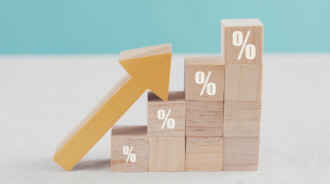

In the following article, we will discuss monopolistic markets, their characteristics, the causes behind their emergence, and regulation.
What are monopolistic markets?
The characteristics of a monopolistic competitive market, in which a single business completely dominates the industry and regulates the availability and pricing of goods and services, are present in a monopolistic marketplace. As a result, a monopolistic market lacks competition.
So, in a monopolistic market, when there is no rivalry, the business may set the cost and supply levels for a service or a product.
Examples
Here are some examples of monopolistic markets:
- Gas company;
- Electricity provider;
- Utility companies.
Note! Monopolistic marketplaces develop when a service or an item has just one provider.
Characteristics of monopolistic markets
A competitive market involves multiple businesses operating and providing the same goods or services; the demand curve is flat compared to the downward turn of a monopolistic market. Here companies can supply any amount they want at the market price.
A monopolistic market exhibits the following traits: single supplier, barriers to entry and exit, profit maximizer, unique product, and price discrimination.
#1. Single supplier
One source controls the market in a monopoly. As a result, the market sets the demand for the company’s goods or services.
#2. Barriers to entry and exit
The obstacles to entering a monopolistic market include patents and copyrights, government licensing, high initial costs, resource ownership, and declining overall average costs.
A monopolistic market exists in which only one provider may produce or provide a particular good or service, preventing entry by other businesses. The corporation could not be permitted to exit the marketplace if the government feels that the good or service offered by the monopoly is essential for the well-being of the general populace.
Public utility firms that provide telephone and electricity services may often be banned from leaving the relevant market.
#3. Profit maximizer
When there is a monopoly, the business seeks to maximize earnings. It can set the prices higher than it would have in a market where there is competition and earn more money. The prices established by the monopoly will represent the market rate because there won’t be any competition.
#4. Unique product
The corporation offers a singular service or item in a monopolistic market. There are no comparable products on the market.
#5. Price discrimination
A business that competes inside a monopolistic market has the power to alter the cost and availability of its items and services. When a company charges certain customers different rates for the same goods, this is known as price discrimination.
The corporation will sell more of the item if the value is low and fewer if the value is high since the market is flexible.
Causes of the emergence of monopolistic markets
Let’s see some reasons behind the existence of monopolistic markets:
- One supplier could become more effective than the others due to the growing benefits of scale. A natural monopoly is the outcome of this.
- Due to the lack of an alternative good or service plus decreased demand elasticity, a company can charge pricing above its marginal cost.
- The government grants a company the exclusive authority to produce a good or service.
- Monopolistic marketplaces can occasionally be the outcome of technological innovation.
- Legal restrictions include licenses, copyrights, and patents
- A company may limit the supply of a valuable natural resource to other enterprises. As a result, it manages the market’s final cost.
So, a monopolistic market develops when a firm has technical dominance, growing returns to scale, and low demand elasticity.

Government regulation
Public utility companies, such as those that provide natural gas and electricity, generally receive monopolies from the government. However, the government may control the monopolistic market to stop these companies from establishing excessive prices.
Additionally, a company could not continue to provide outstanding service in a monopolistic market. Therefore, government regulation assures that a company adheres to the minimum level of service.
The government can regulate a monopolistic market in the following ways:
- Merger control;
- Limiting price augmentation;
- Investigating monopolies’ unfair behavior;
- Dividing up monopolies.
Also, companies should remember that the state can nationalize them as a last resort.
The bottom line
It will be easier to analyze and understand markets now that you know that a single supplier often dominates monopolistic markets. They display traits such as high fees and increased barriers to entry. Understanding monopolistic markets can make your job more accessible in the business world.








